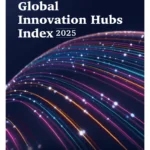
In a business world that evolves at a dizzying pace, the ability to objectively analyze information, solve complex problems, and generate novel ideas has become not just an advantage but a necessity. Critical Thinking (CT) emerges as the fundamental pillar upon which creativity and sustainable innovation in organizations are built. It is no coincidence that leaders and visionaries identify it as an indispensable competency in current and future talent.
The American Management Association already pointed out in 2019 that executives actively seek employees competent in “the four Cs”: Critical Thinking and problem-solving, communication, collaboration, and creativity. This demand is reinforced by more recent reports. The Future of Jobs Report 2025 from the World Economic Forum (WEF) underscores that analytical thinking and innovation are the most in-demand skills, closely followed by creative thinking and the ability to solve complex problems. These competencies are crucial for navigating the job market projected towards 2030 and beyond.
Critical thinking is, without a doubt, one of the most valued skills by employers. Managers and directors, in turn, need to master these skills not only for their own performance but also to foster a culture that drives the growth of their companies and allows them to boldly face the challenges of their environment. As Turan et al. (2019) rightly pointed out, the ability to think critically is more important than ever for today’s and tomorrow’s executives, whose decisions impact countless lives.
Developing your Critical Thinking skills is a differentiating element in any professional field and academic discipline. But what does it really imply? Critical thinking can be described as the ability to think reflectively, reasonably, and independently, questioning assumptions and evaluating arguments before reaching a well-founded conclusion.
In this article, we offer you a complete overview of critical thinking: we will explore its detailed definition, its vital importance in the business ecosystem, the skills that compose it, how you can develop it, and concrete examples of its application. Furthermore, we will delve into its intrinsic relationship with the creativity and innovation processes that transform companies.
What is Critical Thinking? Delving deeper into its definition
Beyond a simple definition, understanding what critical thinking is implies recognizing it as an active and multifaceted process. It’s not about thinking a lot, but thinking well. The Foundation for Critical Thinking defines it as “the intellectually disciplined process of actively and skillfully conceptualizing, applying, analyzing, synthesizing, and/or evaluating information gathered from, or generated by, observation, experience, reflection, reasoning, or communication, as a guide to belief and action.”
For their part, Michael Scriven & Richard Paul (1987) presented a definition during the 8th Annual International Conference on Critical Thinking and Education Reform. They define critical thinking (CP) as “the intellectually disciplined process of actively and skillfully conceptualizing, applying, analyzing, synthesizing, and/or evaluating information gathered from, or generated by, observation, experience, reflection, reasoning, or communication, as a guide to belief and action.”
In essence, being a critical thinker means:
- Not accepting information passively: Questioning the validity of sources and the logic of arguments.
- Identifying and analyzing assumptions: Recognizing underlying ideas that may not be explicitly stated.
- Evaluating evidence: Distinguishing between facts, opinions, and conjectures.
- Recognizing biases: Both one’s own and others’, which can influence interpretation.
- Making logical inferences: Deriving reasonable conclusions from available evidence.
- Considering multiple perspectives: Exploring different viewpoints before forming a judgment.
- Communicating conclusions clearly and coherently: Articulating reasoning effectively.
Critical thinking is not about being negative or excessively critical of others; it is an objective pursuit of truth and understanding, even if that means challenging our own deeply rooted beliefs. It is a skill that moves away from linear thinking and fosters an open and analytical mindset.
In academic literature, a person who uses critical thinking in their academic, business, or other activities is called a “critical thinker.” Thus, one of your goals should be to become one of them.
Critical thinkers rigorously question ideas and assumptions instead of accepting them at face value; in this sense, a critical thinker will identify, analyze, and solve problems systematically rather than by intuition or instinct. In short, it is about making reliable judgments based on reliable information.
The crucial importance of Critical Thinking in the 21st Century
The relevance of critical thinking transcends the professional sphere; it is a vital tool for life. However, in the business and innovation context, its impact is particularly transformative.
For Businesses:
- Improves decision-making: Decisions based on rigorous analysis and evaluation of alternatives tend to be more effective and generate better results. Turan et al (2019) demonstrated that critical thinking is an important requirement for individuals to make better decisions. Likewise, Pacheco et al. (2023) reported that critical thinking is the “sub-competency” most frequently associated with decision-making in business.
- Fosters effective problem-solving: It allows for identifying the root of problems, rather than just treating the symptoms, leading to more durable and innovative solutions. Research by Eggers et al (2017) suggests a positive link between critical thinking and creativity, and they demonstrated the importance of critical thinking as a foundation for creativity. In the same vein, Mujanah et al (2022) evaluated the effect of critical thinking and creativity on the performance of micro, small, and medium enterprises in Indonesia; and concluded that CT and innovation have a significant effect on performance and are linked with high levels of profitability.
- Drives innovation: By questioning the status quo and analyzing market trends and needs from a critical perspective, companies can identify opportunities for new products, services, or processes.
- Optimizes processes and strategies: A critical analysis of existing operations can reveal inefficiencies and areas for improvement.
- More effective risk management: It helps anticipate potential obstacles and develop robust contingency plans.
- Improves internal and external communication: Well-reasoned arguments and a clear understanding of problems facilitate more persuasive and transparent communication.
- Identification of business opportunities: Skrzek and Malik (2023) report that critical thinking skills improve the quality of business opportunity identification through active information seeking; and can be used as a framework for evaluating new product concepts and developing unique product designs.
- Adaptability and Resilience: It enables organizations to adapt to market changes and overcome crises with greater solvency.
For Professionals:
- Professional development and employability: It is one of the most in-demand soft skills by recruiters and is essential for growth in any career. According to Lau (2022), CT is very important in the new knowledge economy.
- Effective leadership: Leaders with critical thinking can guide their teams with greater vision and strategy.
- Autonomy and proactivity: It allows employees to independently tackle challenges and propose valuable solutions.
- Avoids manipulation and deception: It facilitates the detection of logical fallacies, biased information, or fake news. Critical thinkers can reach reasonable conclusions based on data, information, and/or opinions, and discriminate between useful and less useful details to solve problems or make decisions (Doyle, 2022).
In a VUCA (Volatile, Uncertain, Complex, and Ambiguous) environment, critical thinking is the compass that guides towards clarity and effective action.
Key skills of a Critical Thinker: The fundamental pillars
Critical thinking is not a single skill, but a set of interrelated capacities that work together. Researchers like Erstad (2018) emphasize that developing these critical thinking skills is essential for their effective application:
- Analysis: The ability to break down complex information into smaller, manageable parts to understand their interrelationships. It involves identifying arguments, assumptions, and evidence.
- Interpretation: Understanding and expressing the meaning or significance of a wide variety of experiences, situations, data, events, judgments, conventions, beliefs, rules, procedures, or criteria.
- Evaluation: Assessing the credibility of statements or representations and the logical strength of inferential or argumentative relationships. Is the source reliable? Is the argument sound?
- Inference: Identifying and securing the elements necessary to draw reasonable conclusions; formulating conjectures and hypotheses; considering relevant information and deducing the consequences that follow from data, statements, principles, evidence, judgments, beliefs, opinions, concepts, descriptions, questions, or other forms of representation.
- Explanation: Being able to present the results of one’s own reasoning in a convincing and coherent manner. This includes justifying reasoning in terms of the evidence, concepts, methodology, and contextual criteria on which the results were based.
- Self-Regulation (or Metacognition): Self-awareness of one’s own thought processes. It involves reflection on one’s own reasoning and the correction of possible errors or biases. It is, in essence, “thinking about how we think.”
- Observation: Paying detailed attention to the environment and information, capturing data that others might overlook.
- Communication: Articulating ideas and arguments clearly, precisely, and persuasively, both orally and in writing.
- Problem-Solving: Applying critical thinking skills to identify, analyze, and solve problems effectively.
- Open-mindedness: The willingness to consider new ideas and perspectives, even if they contradict one’s own beliefs. It is fundamental to avoid confirmation bias.
Mastering these characteristics of critical thinking will make you an invaluable asset in any team or organization.
How to develop and improve your Critical Thinking skills
The good news is that CT is not an innate gift, but a skill that can be learned, practiced, and perfected over time. Here are some effective strategies to develop critical thinking:
- Question everything (constructively): Do not accept information at face value. Ask “why,” “how,” “what if.” Challenge your own assumptions and those of others.
- Clearly define the problem or question: Before seeking solutions, ensure you fully understand the core of the matter. What is the real problem we are trying to solve?
- Gather and evaluate information from diverse sources: Do not limit yourself to a single perspective. Seek varied data, evidence, and opinions. Analyze the credibility and relevance of each source.
- Identify and analyze arguments: Break down arguments into their premises and conclusions. Evaluate whether the premises logically support the conclusion.
- Recognize and avoid cognitive biases: We all have biases (confirmation, anchoring, availability, etc.). Learn to identify them in yourself and others to minimize their impact.
- Consider the implications and consequences: Think beyond the immediate solution. What are the short-term and long-term effects of a decision or action?
- Gamification: Angelelli et al. (2023) report that a serious analog (board) role-playing game improves critical thinking in several ways, especially for vulnerable communities; in this sense, you can explore gamification as a strategy to improve your thinking abilities.
- Practice active listening and empathy: Try to understand others’ viewpoints, even if you disagree. This can reveal new perspectives and strengthen your own analysis.
- Foster intellectual curiosity: Maintain a constant thirst for knowledge. Read widely, explore new topics, and stay informed about advancements in your field and the world.
- Ask for feedback: Share your ideas and reasoning with others and ask for constructive criticism. This will help you identify blind spots.
- Reflect on your past decisions: Analyze your successes and failures. What thought processes led you to them? What could you have done differently?
- Use of Artificial Intelligence: Studies by Guo and Lee (2023) and Suriano et al. (2025) suggest that the emergence of ChatGPT holds promising potential for developing and refining students’ confidence in skills such as critiquing, evaluating, analyzing, and drawing logical conclusions with limited knowledge.
- Use specific techniques:
- Mind maps: To organize ideas and explore connections.
- SWOT Analysis (Strengths, Weaknesses, Opportunities, Threats): To evaluate strategic situations.
- Edward de Bono’s Six Thinking Hats: To approach a problem from multiple perspectives.
- The Socratic method: Asking deep questions to stimulate critical analysis.
Improving critical thinking is a continuous journey of learning and deliberate practice.
Activities to develop Critical Thinking
There are multiple methodologies you can learn. Below we present a series of books that include exercises to help you develop your critical thinking:
- WebQuest Model: WebQuest teaching fosters active student learning and the construction of personal knowledge; it emphasizes students improving critical thinking and cognitive learning. In their research, Chen (2021) determined that the WebQuest model can affect the psychology of critical thinking and operational ability.
- ENCIC-CT Model: Franco et al. (2024) propose the ENCIC-CT (named after the ENseñanza de las CIencias y Competencias research group at the University of Málaga, Spain), which arises from an exhaustive review incorporating aspects such as dispositions towards critical thinking, explicit references to scientific practices (argumentation, inquiry, and modeling), a restructuring of CT dimensions into domains, and strategies for its development.
- The Critical Thinking – Workbook: Games and Activities for Developing Critical Thinking Skills. The document includes a series of exercises you can easily execute.
- 81 Fresh & Fun Critical – Thinking Activities.
- The Critical Thinking Tool Kit is designed to improve your critical thinking skills and problem-solving ability.
The indispensable synergy: Critical Thinking, creativity, and business Innovation
Although sometimes presented as opposites, critical thinking and creativity are, in reality, two sides of the same coin, especially when it comes to business innovation. Innovation does not arise in a vacuum; it requires both the generation of new ideas (creativity) and the evaluation and refinement of those ideas to turn them into viable and valuable solutions (CT).
How do they interconnect?
- Critical thinking evaluates and validates creativity: Creativity can generate a multitude of ideas, some brilliant and others not so much. Critical thinking acts as an essential filter, helping to analyze the originality, feasibility, relevance, and potential impact of each idea. Without critical analysis, companies could invest resources in unpromising ideas.
- Critical thinking identifies problems and opportunities for creativity: By critically analyzing existing processes, market needs, or emerging trends, problems that need creative solutions or niche opportunities for innovation can be discovered. A good diagnosis (the product of critical thinking) is the first step towards a creative solution.
- Creativity feeds critical thinking with new perspectives: To evaluate a situation comprehensively, novel approaches are often needed. Creativity can help “think outside the box” to consider alternatives that a purely linear analysis might overlook.
- Critical thinking refines and develops creative ideas: An initial idea is rarely perfect. CT helps to break it down, identify its weaknesses, strengthen its strengths, and develop it into an implementable innovation. This iterative process of creative generation and critical evaluation is key.
In the context of business innovation:
- Identification of opportunities: Critical thinking analyzes the market, competition, and internal capabilities to detect areas where innovation can generate value.
- Generation of ideas (Divergence): Creativity is encouraged to propose multiple solutions or approaches to identified problems or opportunities.
- Evaluation and selection of ideas (Convergence): Critical thinking comes into play to analyze the feasibility, market potential, risks, and resources needed for each idea, selecting the most promising ones.
- Development and prototyping: Critical thinking is applied to plan implementation, solve technical problems, and refine the concept.
- Implementation and Adjustment: Even after launch, critical thinking is necessary to monitor results, learn from experience, and make adjustments.
Companies that cultivate both the ability to think critically and to foster creativity are those that achieve disruptive and sustainable innovation.
How to assess your Critical Thinking skills?
There are different psychological tests used to evaluate critical thinking skills; the most popular are the following standardized tests:
- Watson-Glaser Critical Thinking Appraisal (WGCTA): The standard version consists of multiple-choice questions for a one-hour test. The test is built around five subscales: inference, recognition of assumptions, deduction, interpretation, and evaluation of arguments (Bernard et al., 2008).
- California Critical Thinking Skills Test (CCTST): A test that can be completed online, with sub-scores for different categories, such as analysis, inference, induction, etc. The CCTST is an objective measure of the core reasoning skills needed for reflective decision-making about what to believe or what to do (Knox, ?).
- Halpern Critical Thinking Assessment (HCTA): Focuses on five dimensions of CT: verbal reasoning; argument analysis; thinking as hypothesis testing; likelihood and uncertainty; and decision making and problem solving (Rodrigues et al., 2018).
The Critical Thinking process
Tomaszewski (2022) proposes the following seven steps in the critical thinking process:
- Identify the problem: Be as precise as possible; the more defined the problem, the easier it will be to find solutions or answers.
- Gather data, opinions, and arguments: Try to find various sources that present different ideas and viewpoints.
- Analyze and evaluate the data: Are the sources reliable? Are the conclusions backed by data or are they just argumentative? Is there enough information or data to support the given hypotheses?
- Identify assumptions: Are you sure the sources you found are unbiased? Are you sure you weren’t biased in your search for answers?
- Establish significance: What information is most important? Is the sample size sufficient? Are all opinions and arguments relevant to the problem you are trying to solve?
- Make a decision / reach a conclusion: Identify several possible conclusions and decide which (if any) are sufficiently supported. Weigh the strengths and limitations of all possible options.
- Present or communicate: Once you have reached a conclusion, present it to all interested parties.
Critical Thinking in action: Examples in the business world
To better understand the value of critical thinking, let’s look at some examples of critical thinking applied in business environments:
- Developing a new product:
- Without critical thinking: Launching a product based on a hunch or because the competition did it.
- With critical thinking: A team researches unmet market needs (analysis), evaluates technical and financial viability (evaluation), analyzes competitors’ offerings (interpretation), predicts potential challenges (inference), and designs a unique and well-founded value proposition (explanation). They ask themselves: Does this product solve a real problem for a defined market segment? Are our sales projections realistic? What risks have we not considered?
- Resolving a drop in sales:
- Without critical thinking: Blaming external factors without a deep analysis or implementing the first solution that comes to mind.
- With critical thinking: A sales manager does not immediately assume the cause. They collect sales data, customer feedback, competitor information, and market trends (observation and analysis). They consider multiple hypotheses: Is it a problem with the product, price, promotion, sales team, or a combination? (inference). They evaluate each hypothesis with evidence before proposing and implementing specific, measurable solutions (evaluation and problem-solving).
- Evaluating a digital marketing proposal:
- Without critical thinking: Accepting an agency’s proposal because it sounds impressive or promises quick results.
- With critical thinking: A marketing director questions the proposed metrics: Are they vanity metrics or do they really impact the business? (evaluation). They analyze the campaign’s target audience and whether the chosen platforms are appropriate (analysis). They ask for examples of previous campaigns and their concrete results (interpretation). They consider the expected ROI and risks (inference).
- Improving customer experience:
- Without critical thinking: Implementing changes based on isolated complaints or superficial trends.
- With critical thinking: A company uses surveys, focus groups, and behavioral data analysis to deeply understand the pain points in the customer journey (analysis and interpretation). It identifies patterns and root causes of dissatisfaction (inference). It prioritizes improvements that will have the greatest impact and are feasible to implement (evaluation and problem-solving).
These examples of critical thinking at work illustrate how this skill allows for tackling challenges and opportunities more strategically and effectively.
Overcoming common barriers to Critical Thinking
Despite its importance, consistently applying CT can be a challenge. There are several barriers, both internal and external, that can hinder our ability to think clearly and objectively:
- Cognitive biases: These are mental shortcuts our brain uses to make decisions quickly, but they often lead to errors in judgment. Some common ones include:
- Confirmation bias: Seeking or interpreting information that confirms our pre-existing beliefs.
- Anchoring: Relying too heavily on the first piece of information offered.
- Availability heuristic: Overestimating the likelihood of events that are easy to recall.
- Groupthink: Prioritizing group consensus over a realistic evaluation of alternatives.
- Social pressure and conformity: The fear of dissenting or being the “spoilsport” can lead people to not express their doubts or critical analyses.
- Emotions: Decisions made under strong emotional influence (fear, anger, excessive enthusiasm) may not be objective.
- Overconfidence: Believing one already knows everything or that one’s own opinions are inherently superior can close the door to critical analysis.
- Lack of information or incorrect information: Without accurate and relevant data, it is difficult to perform a solid critical analysis.
- Lack of practice and skill: Like any skill, critical thinking requires development and conscious practice.
- Unquestioned assumptions: Accepting ideas or practices as “it’s always been this way” without critically examining them.
- Organizational culture: An environment that does not value questioning or punishes mistakes can stifle critical thinking.
Being aware of these barriers is the first step to overcoming them and fostering a culture where critical thinking for decision-making is the norm.
Conclusions
In today’s dynamic and competitive world, critical thinking has ceased to be an intellectual luxury and has become a fundamental competency for business survival and success. It is the skill that allows us to discern, analyze, evaluate, and ultimately, act with greater intelligence and purpose.
As we have seen, its influence extends from strategic decision-making and complex problem-solving to fostering creativity that leads to significant and sustainable innovation. Companies that invest in developing critical thinking in their leaders and teams not only improve their operational performance but also build a culture of continuous learning, adaptability, and foresight.
Incorporating critical thinking into your organization’s DNA and your own professional development is not just a recommendation; it’s an imperative, especially when you want to implement processes of business creativity and innovation. By embracing curiosity, rigorous questioning, and the pursuit of clarity, you will be laying the groundwork to innovate constantly and lead change in your sector.
References
American Management Association (AMA). 2019. AMA Critical Skills Survey: Workers Need Higher Level Skills to Succeed in the 21st Century.
Angelelli, C. V., Ribeiro, G. M. D. C., Severino, M. R., Johnstone, E., Borzenkova, G., & Da Silva, D. C. O. (2023). Developing critical thinking skills through gamification. Thinking Skills and Creativity, 49, 101354. https://doi.org/10.1016/j.tsc.2023.101354
Bernard Robert M., Dai Zhang, Philip C. Abrami, Fiore Sicoly, Evgueni Borokhovski, Michael A. Surkes. 2008. Exploring the structure of the Watson–Glaser Critical Thinking Appraisal: One scale or many subscales? Thinking Skills and Creativity, Volume 3, Issue 1, 2008, Pages 15-22, ISSN 1871-1871, https://doi.org/10.1016/j.tsc.2007.11.001.
Caroselli M. 2011. The Critical Thinking Tool Kit. American Management Association. 233 p.
Chen, Chenin. 2021. Effects of the Application of WebQuest to Technology Education on Business Management Students’ Critical Thinking Psychology and Operation Capability. Contemporary Educational Technology, v13 n1 Article ep290 2021
Defining Critical Thinking. The Foundation for Critical Thinking.
Doyle Alison. 2022. Critical Thinking Definition, Skills, and Examples. ThoughtCo.
Eggers, F, Lovelace, KJ, Kraft, F. Fostering creativity through critical thinking: The case of business start-up simulations. Creat Innov Manag. 2017; 26: 266– 276. https://doi.org/10.1111/caim.12225
Erstad Will. 2018. 6 Critical Thinking Skills You Need to Master Now. Rasmussen University.
Franco-Mariscal, A.J., Cano-Iglesias, M.J., España-Ramos, E., Blanco-López, Á. (2024). The ENCIC-CT Model for the Development of Critical Thinking. In: Franco-Mariscal, A.J. (eds) Critical Thinking in Science Education and Teacher Training. Contemporary Trends and Issues in Science Education, vol 64. Springer, Cham. https://doi.org/10.1007/978-3-031-78578-8_1
Guo, Y., & Lee, D. (2023). Leveraging ChatGPT for Enhancing Critical Thinking Skills. Journal of Chemical Education, 100, 4876–4883
Knox D. ? The California Critical Thinking Skills Test. Clemson University. 14 p.
Lau Joe. 2022. What is critical thinking?
Mujanah, S., Ardiana, I., Nugroho, R., Candraningrat, C., Fianto, A & Arif, D. (2022). Critical thinking and creativity of MSMEs in improving business performance during the covid-19 pandemic. Uncertain Supply Chain Management, 10(1), 19-28.
Pacheco-Velázquez, E. A., Vázquez-Parra, J. C., Cruz-Sandoval, M., Salinas-Navarro, D. E., & Carlos-Arroyo, M. (2023). Business Decision-Making and Complex Thinking: A Bibliometric Study. Administrative Sciences, 13(3), 80. https://doi.org/10.3390/admsci13030080
Rodrigues Franco, Amanda, Soares Costa, Patrício, & da Silva Almeida, Leandro. (2018). Translation, adaptation, and validation of the Halpern Critical Thinking Assessment to Portugal: Effect of disciplinary area and academic level on critical thinking. Anales de Psicología, 34(2), 291-297. https://dx.doi.org/10.6018/analesps.34.2.272401
Skrzek-Lubasińska, M. and Malik, R. (2023), “Is critical thinking a future skill for business success: science mapping and literature review“, Central European Management Journal, Vol. 31 No. 1, pp. 48-63. https://doi.org/10.1108/CEMJ-09-2021-0110
Suriano, R., Plebe, A., Acciai, A., & Fabio, R. A. (2025). Student interaction with ChatGPT can promote complex critical thinking skills. Learning and Instruction, 95, 102011. https://doi.org/10.1016/j.learninstruc.2024.102011
Turan, U., Fidan, Y., & Yildiran, C. (2019). Critical Thinking as a Qualified Decision Making Tool. Journal of History Culture and Art Research, 8(4), 1-18. https://doi.org/10.7596/taksad.v8i4.2316
Tomaszewski Michael. 2022. Top 8 Critical Thinking Skills and Ways to Improve Them. Zety.
Editor and founder of “Innovar o Morir” (‘Innovate or Die’). Milthon holds a Master’s degree in Science and Innovation Management from the Polytechnic University of Valencia, with postgraduate diplomas in Business Innovation (UPV) and Market-Oriented Innovation Management (UPCH-Universitat Leipzig). He has practical experience in innovation management, having led the Fisheries Innovation Unit of the National Program for Innovation in Fisheries and Aquaculture (PNIPA) and worked as a consultant on open innovation diagnostics and technology watch. He firmly believes in the power of innovation and creativity as drivers of change and development.





